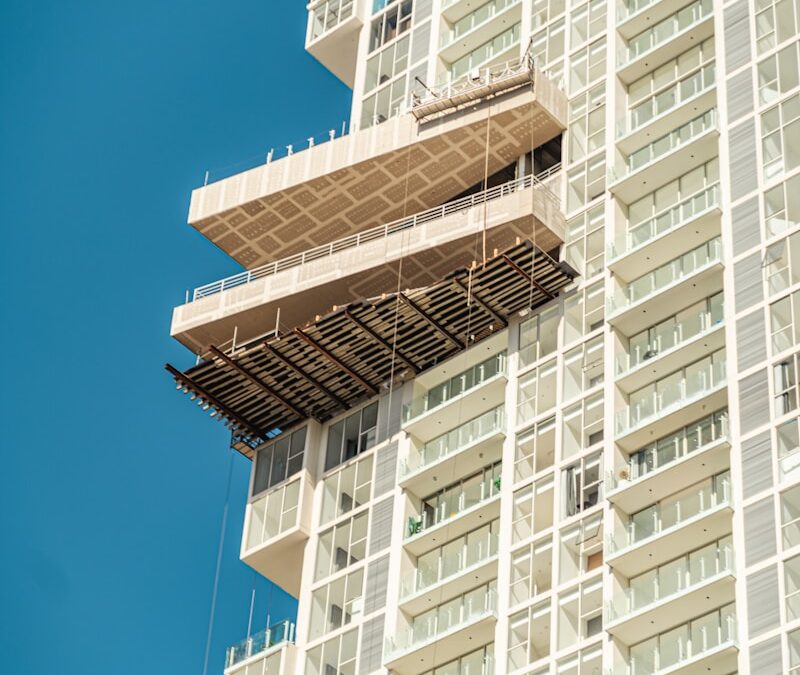The Role of Public-Private Partnerships in Vertical Urban Developments
Understanding Public-Private Partnerships in Urban Planning
The role of public-private partnerships in vertical urban developments is increasingly critical as cities around the world seek innovative solutions to accommodate growing populations. In regions like Saudi Arabia and the UAE, where urban expansion is rapid, these partnerships are essential for successful planning and execution of large-scale vertical projects. Public-private partnerships (PPPs) combine the strengths of government agencies and private sector companies to achieve common goals, leveraging resources, expertise, and investment.
Vertical urban developments, characterized by high-rise buildings and mixed-use structures, offer efficient use of limited urban space. These developments are vital for cities like Riyadh and Dubai, where horizontal expansion is constrained by geographical and environmental factors. PPPs facilitate the integration of sustainable practices, modern technologies, and innovative design in these projects, ensuring they meet the needs of both residents and businesses.
In Saudi Arabia, projects like the King Abdullah Financial District demonstrate the effectiveness of PPPs in creating world-class urban centers. Similarly, in Dubai, the collaboration between public authorities and private developers has resulted in iconic projects like the Burj Khalifa and Dubai Marina. These successful examples underscore the importance of strategic partnerships in transforming urban landscapes and driving economic growth.
Optimizing Collaborations for Effective Urban Development
For PPPs to be truly effective in vertical urban developments, it is crucial to establish clear frameworks and guidelines that outline the roles and responsibilities of each party. This involves creating robust contractual agreements that define project scope, timelines, and financial commitments. In Riyadh and Dubai, transparent and well-structured PPP frameworks have been instrumental in ensuring that projects are completed on time and within budget.
Another key factor in optimizing PPPs is fostering a collaborative culture that encourages open communication and joint problem-solving. Regular meetings and workshops can help align the objectives of public and private stakeholders, ensuring that everyone is working towards the same goals. In the UAE, initiatives like the Dubai Future Foundation provide platforms for such collaboration, bringing together government officials, industry leaders, and entrepreneurs to discuss and address urban development challenges.
Innovation is also a crucial component of successful PPPs. By leveraging the latest technologies and best practices, partners can enhance the efficiency, sustainability, and livability of vertical urban developments. In Saudi Arabia, the NEOM project exemplifies this approach, integrating advanced technologies such as AI and blockchain to create a smart, sustainable city. These innovations not only improve the quality of life for residents but also position the city as a global leader in urban development.
Case Studies of Successful Public-Private Partnerships
Case Study: The King Abdullah Financial District, Riyadh
The King Abdullah Financial District (KAFD) in Riyadh is a prime example of how public-private partnerships can drive successful vertical urban development. This ambitious project, initiated by the Saudi Arabian government in collaboration with various private sector partners, aims to create a leading financial hub in the Middle East. The development includes state-of-the-art office spaces, residential buildings, and recreational areas, all designed with sustainability in mind.
One of the key factors behind KAFD’s success is the clear division of responsibilities between public and private stakeholders. The government provided the necessary land and infrastructure, while private developers were responsible for constructing and managing the buildings. This collaboration ensured that the project remained on track, with each party leveraging its strengths to overcome challenges.
Furthermore, KAFD incorporates numerous sustainable design elements, such as energy-efficient buildings and green spaces, reflecting the commitment of both public and private partners to environmental sustainability. This focus on sustainability not only enhances the district’s appeal but also aligns with Saudi Arabia’s Vision 2030 goals of promoting sustainable urban development.
Case Study: Dubai Marina, Dubai
Dubai Marina, one of the most iconic waterfront developments in the world, showcases the power of public-private partnerships in creating vibrant urban spaces. This project involved collaboration between the Dubai government and several private developers to transform a stretch of desert coastline into a bustling urban community. The development features luxury residences, commercial spaces, and recreational facilities, attracting residents and tourists alike.
A key aspect of Dubai Marina’s success is the strategic planning and coordination between public and private entities. The government played a crucial role in providing the necessary infrastructure, such as roads and utilities, while private developers focused on constructing high-quality buildings and amenities. This division of labor allowed for efficient project execution and high standards of quality.
Innovation has also been a driving force behind Dubai Marina’s development. The use of cutting-edge construction techniques and smart technologies has created a modern, sustainable urban environment. The Marina’s extensive network of pedestrian pathways and public spaces fosters a sense of community and enhances the overall livability of the area, making it a model for future vertical urban developments.
Conclusion
In conclusion, public-private partnerships play a pivotal role in the planning and execution of vertical urban developments, especially in rapidly growing cities like Riyadh and Dubai. By combining the resources and expertise of both public and private sectors, these partnerships can create innovative, sustainable urban environments that meet the needs of modern urban life. Successful examples like the King Abdullah Financial District and Dubai Marina highlight the importance of clear frameworks, collaborative cultures, and a focus on innovation in optimizing these partnerships. As cities continue to evolve, fostering effective public-private collaborations will be key to achieving sustainable and resilient urban development.
—
#PublicPrivatePartnerships #VerticalUrbanDevelopments #UrbanPlanning #SustainableArchitecture #UAEInnovation #SaudiArabiaUrbanProjects #LeadershipInUrbanDevelopment

